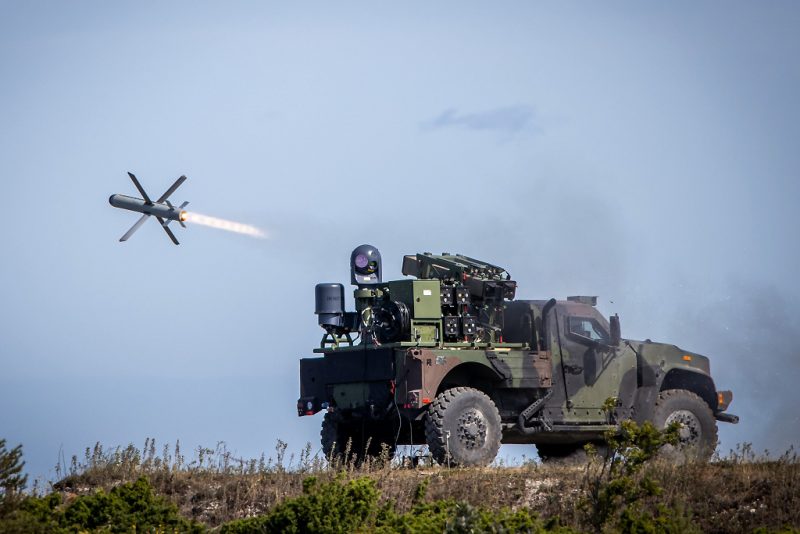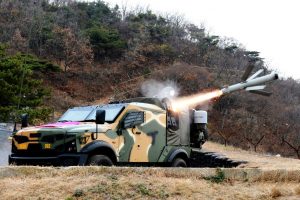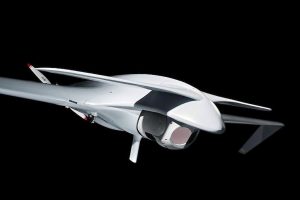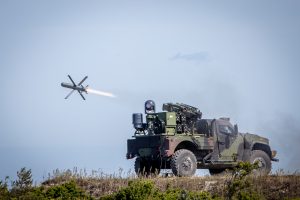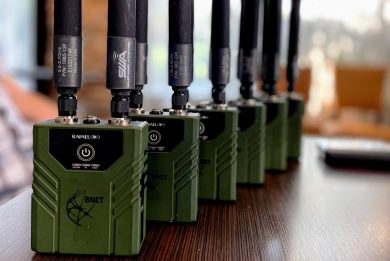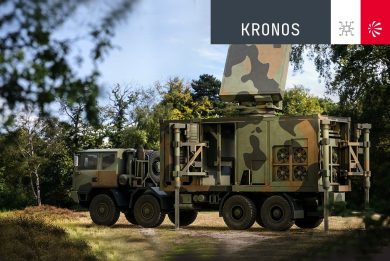DEFEA 2023: Rafael details NMT deal with the Hellenic Army
Greece has been the first customer for Rafael’s NMT concept, a full System-of-Systems comprising end-to-end sensor-to-shooter loop capable to work in a totally autonomous mode
Defending Greek islands, coasts and borders from potential aggressions is a must for the Hellenic Army, which adopted Rafael NMT (NLOS MissionTaskForce) to be able to quickly react to potential threats. Coupling long range accurate effectors to persistent ISR, all linked to an effective communications system and an AI-based command and control allows to dramatically shorten the sensor-to-shooter loop, permitting to hit even volatile targets.
The brain if the NMT is the Fire Weaver, the C4I system developed by Rafael ** . The NMT relies on the company BNET digital radio network, which ensures video streaming in real time from the flying sensor with nearly no latency.
The UAV providing persistent intelligence, surveillance and reconnaissance (ISR) is the Orbiter 3 UAS, designed and produced by Aeronautics, which is partly owned by Rafael itself. The Orbiter 3 has a canard architecture, and according to data provided vy the company it has a 4.4 metres wingspan, and is powered by an electric motor driving a pushing propeller that allows a maximum flight speed of 70 knots. It has a 32 kg maximum take-off mass fixed wing UAS capable to carry a 5.5 kg payload and to fly for 6 hours with a data-link line of sight range of 50 km. Launched by a catapult and recovered by parachute, it is runway independent which considerably adds to its flexibility. Developed as a multirole UAV, capable to carry payloads of different types, as part of the NMT this is an optronic package that allows it to provide images allowing to detect, reconnoitre and identify targets.
The Orbiter 3 payload also allows to geolocate the target, its grids being fed into the Fire Weaver, the C4I system ensuring automatic identification. At this point the Fire Weaver assigns the target to the most appropriate launcher, based on its location as well as on, operational and logistic considerations. Targeting is based on image processing, and employs artificial intelligence based algorithms to allow immediate and automatic decisions. Israel is well known for its systems using georeferenced pixels to allow precise targeting even when this is seen from different perspectives, another function allowing to shorten the cycle and, above all, to avoid all limitations due to the use of GNSS.
The effector used in the NMT is Rafael’s Spike NLOS, for Non-Line-Of-Sight. The missile in canister is slightly heavier than 70 kg, and can be fitted with HEAT, fragmentation or penetration-blast-fragmentation. This allows treating targets such as armoured vehicles, naval units, infrastructures and infantry in the open. The Spike NLOS range is 32 km when surface-launched and 50 km when air-launched. Its guidance is based on a real-time wireless data link, thus the Spike NLOS does not rely on GNSS signals for its guidance, which avoids its navigation system to be spoofed or jammed, allowing it to operate in GNSS-denied areas. Thanks to the data-link the missile can be redirected onto a new target should the need arise.
The NMT configuration acquired by Greece sees Spike NLOS launched from Tamuz launchers, each carrying 10 missiles. The launcher is installed on a Sandcat vehicle, provided by Plasan. The Hellenic Army basic firing unit will be the platoon, which will include two vehicles fitted with the Tamir launcher and a vehicle carrying one Orbiter 3 UAV kit, which includes two airframes. Three platoons form one company, and three companies form a battalion, the latter being therefore capable to deploy 12 launchers and six Orbiter 3 kits. The government-to-government contract signed between Israel and Greece includes 34 launchers, 17 UAV kits and some 350 missiles. This means one battalion will lack one platoon. According to information provided by Rafael, each battalion will be able to protect an area of about 150 km in diameter.
The System-of-Systems that is being provided to Greece will definitely be the subject of future enhancements. As for the Fire Weaver it is quite sure that Rafael is constantly improving is capabilities, and these might well be provided to the Hellenic Army in the future, the service being able to select those considered of key importance. The same applies to the effector; EDR On-Line understands that in the current configuration not all the Spike NLOS capabilities will be exploited, such as for example the target handover between platforms or the volley shooting mode, and here too there is room for growth.
Considering that Greece is using Spike missiles on many platforms, among them AH-64 attack helicopters and naval light assault units, another possible step forward might be their inclusion in the NMT bubble shortening their sensor-to-shooter loop. “With non-integrated systems this is around 30 minutes,” the programme manager for the Greek NMT project told EDR On-Line, “while with the system we are providing this will be reduced by an order of magnitude, down to 2-3 minutes.”
The overall value of the contract was approximately 370 million Euros. Deliveries should start in late 2004, 18 months after the contract signature, and last three years

